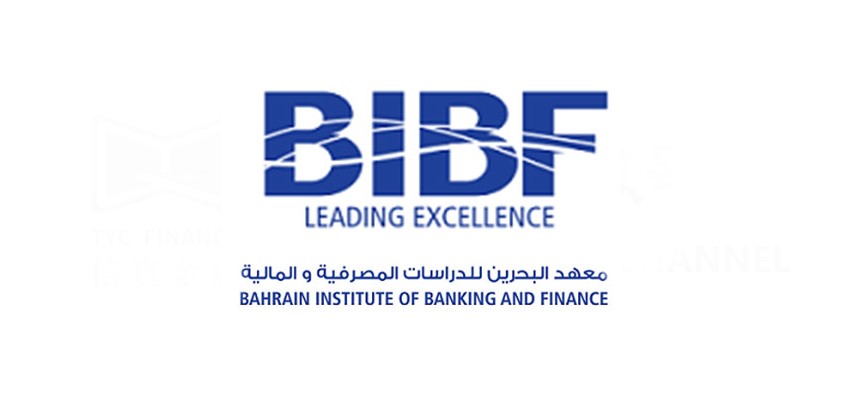

Market Updates and Information Exchange


Cryptos: Distinguishing Hype
and Realities in Islamic Finance
Dr
Fares Djafri
Introduction
According to the Financial Stability
Board’s recent study, crypto-asset market capitalisation grew 3.5 times in 2021
to USD2.6 trillion. Still, the market remains a small portion of the overall
global financial system, and direct connections between crypto assets and
systemically important financial institutions and core financial markets are limited
at the present time. The market, according to the European Central Bank,
represents less than 1% of the global financial system in terms of size, but it
is still similar in size to, for example, the securitised sub-prime mortgage
markets that triggered the global financial crisis of 2007-2008. However, most
central banks perceive the use of cryptocurrencies for payments to be trivial
or limited to niche groups and not widely used in critical financial services
(including payments) on which the real economy depends. Besides, the different
incidences of price volatility in cryptocurrency markets have, so far, been
contained within crypto-asset markets and have not spilled over to other
financial markets and infrastructures.
This report—which is based on the notes and
commentaries shared by the participants of the workshop “Cryptos:
Distinguishing Hype and Realities in Islamic Finance”, held at SOAS, University
of London on 16th June 2022—discusses the above-mentioned topic in some detail.
Although the full commentaries are extremely valuable and beneficial, this
‘summary of commentaries’ aims to discuss the most crucial concerns regarding
cryptos that the world faces today. The report gives some insights regarding
the crypto-asset industry and sheds light on some legal and sharīʿah issues
that can arise in cryptocurrencies. To serve this purpose, this report is a
brief compilation, with selective editing, of the notes and commentaries shared
by individuals prior to the workshop. A list of contributors is placed at the
end of this report.
The report is divided into four sections:
the first section provides an overview of cryptocurrencies and the relationship
between Islamic finance and crypto assets. The second section discusses the
legal and technical issues in cryptocurrency, while the third section
deliberates stable coins and central bank digital currencies (CBDCs). The
fourth section reports the sharīʿah ruling on cryptocurrencies and the way
forward.
Cryptocurrencies: An
Overview
Crypto assets and cryptocurrencies are
becoming an increasingly pervasive aspect of financial activity. They are
considered an innovative virtual form of money that is different from a
traditional form of money. Crypto assets can be classified into three types:
cryptocurrencies, or payment/exchange tokens, that are used as a means of value
exchange; utility tokens that grants access to a digital product, service or
platform; and security tokens representing an investment instrument.
One of the most significant characteristics
of cryptocurrencies such as Bitcoin is decentralisation, which means that no
government or private entity supervises their issuance. Likewise,
cryptocurrencies are characterized by being encrypted and having no tangible
physical existence or presence. Transactions involving them might entail
trading between parties without intermediaries, which is known as a
peer-to-peer system. Most cryptocurrencies exist and function on blockchain
technology. Blockchain is a decentralized digital ledger technology which operates
without the need for a central authority or third party. More specifically,
blockchain is a computer protocol that tracks and records data using a
distributed digital ledger system. The importance of this technology is evident
in the fact that it allows many participants of the same network (the so-called
nodes) to store and verify information/data on a single shared ledger so that
everyone can see the same data.
Unlike fiat currencies, no central public
authority issues cryptocurrencies, and their quantity and value are beyond the
purview and control of the state. Instead, they are based on the interactions
of decentralised actors and on technologies such as cryptography, which ensures
their security, and blockchain, which prevents counterfeit and fraud.
Cryptocurrencies need to be distinguished
from digital or electronic currencies, known also as electronic money
(e-money). While the latter is an electronic representation of existing fiat
currency, the former is an alternative currency that is supported by
cryptography and blockchain. In other words, e-money is issued through
authorized financial institutions and represents the nominal value of banknotes
in a different form, whereas cryptocurrencies can be issued by anonymous
individuals or groups that are independent of the state’s authority. The
Sharīʿa Advisory Council (SAC) of Bank Negara Malaysia at its 201st meeting and
26th special meeting on 29 January and 30 January 2020 has made a ruling that:
“electronic money (e-money) is a permissible payment instrument under sharīʿa,
provided that the e-money is structured based on appropriate sharīʿa
contract(s) to preserve the rights and obligations of the contracting
parties".
It is worth noting that transactions in
crypto assets would not have taken off unless there were perceived advantages
over other tradable assets. Their success was due to clever exploitation of new
technologies which had clear advantages over the traditional bundled assets in
financial portfolios. The aim of the instigators was not to replace managed
funds but, rather, to propose digital alternatives that had much lower
transaction costs. In other words, crypto assets are not quoted in national
currencies but in their own unit of account everywhere; thus, the need for
exchange rate transfers is eliminated. The second advantage is that data from
crypto transactions, including orders and transaction notifications, are
encrypted. This converts the original information into ciphertext which only
authorised users can read. As a result, the scope for fraudulent activities is
drastically reduced. In addition, a third safeguard, blockchain, prevents
unwanted entry or access. This refers to a global network of computers which
possess all the data or transactions pertaining to a particular block. In other
words, because full records have been retained, any abuse of the system by
unauthorised parties can be quickly traced and appropriate action taken. This
ensures transaction security with electronic records always available.
Islamic Finance and Crypto
Assets
Islamic finance and crypto assets have
little in common. To elaborate, Islamic finance involves risk sharing, the aim
being to encourage and facilitate social assistance with a stress on mutual
endeavour. Islamic finance is socially centred, whereas the placement of crypto
funds is self-centred, with each investor on their own. Ironically, despite the
goal being to reduce risk, crypto is much more risky than Islamic finance. Risk
avoidance and mitigating risk are standard features of Islamic finance, often
through teamwork. In contrast with crypto assets there is no collective
endeavour; rather, there is concern that rivals could damage one’s own
financial returns and business prospects.
Islamic finance offers a wide range of
products, catering for both families and investment in small and medium-sized
enterprises (SMEs). Most Islamic finance is provided by Islamic banks, which
although sharīʿah compliant, is organised on the basic model of conventional
banks. In contrast, crypto assets are usually acquired through exchanges, which
have more in common with stock or commodity exchanges.
Islamic financial institutions make
considerable efforts to build client relationships which can last over decades.
In contrast, the buying and selling of crypto assets is largely transactional,
with clients searching for the best bargains. There is no loyalty to a
particular exchange; these only cater for transaction orders and do not provide
client advice
In Islamic finance, investors take an
interest in how and where their funds are invested. The how refers to the
investment vehicle such as an Islamic equity fund or a sukuk, which is similar
to a bond in its fixed-income nature but links to a specified asset. Such
disclosure is helpful to investors seeking to share risk. In contrast,
purchasers of crypto assets have little interest in what the assets represent
and what is actually being financed. The assets may be designated currencies,
whose price reflects macroeconomic conditions but not company-level
microeconomic data. Such investments are not viewed as productive, the main
gain being the liquidity provided to the market for the assets. It should be
stressed that there is no inherent immorality in cryptocurrencies; rather, the
concern is with high-risk practices in very speculative markets. Speculation is
the driver, and it becomes the dominant market force.
Legal and Technical Issues
in Cryptocurrency
The basic premise that cryptocurrencies are
money can be questioned. While cryptocurrencies such as Bitcoin can be used for
transactions, their general use in the wider economy is very limited. A key
feature of cryptocurrencies is the high volatility of their prices, which makes
it difficult to use them to store value and to measure the value of other
things. Given the price volatility and relatively higher transactions costs
relative to fiat currencies, cryptocurrencies fail to perform the functions of
money, which are: unit of account, medium of exchange, and store of value.
There are several legal and technical issues involved in dealing with
cryptocurrencies. The most important of them are:
Hacks
and Cybersecurity Issues: The virtual system is still prone to attack and the
possibility of tampering. Hacking and cybersecurity threats are not new to the
digital world; however, their occurrence may be more frequent in the crypto
space because this space is still in its infancy. Consequently, the use of
cryptocurrencies (e.g., Bitcoin) as an alternative to the existing monetary
system may not be secure as they are not asset backed.
Legal Risk: Most cryptocurrencies are not considered as legal tender that an authority like a government supervises the issuance of. Without legal recognition of cryptocurrencies and the patronage of official authorities, they will be exposed to the harsh volatility of market price fluctuations.
Tax
Evasion Risk: The exchange of goods and services through virtual platforms
using Bitcoin make it susceptible to the risk of tax evasion as there is no
room for oversight by the relevant authority.
Consumer
Risk: The decentralized nature of cryptocurrencies and the instability of the
market price may harm the consumer. Cryptocurrencies’ high volatility makes
trading in them highly risky, rendering investments in them a gambling-like
business, which raises a sharīʿah issue. The high fluctuation of market value
can result in cryptocurrencies losing purchasing power and, thus, exposes
consumers to the inability to retain the value of money and store wealth.
Black
Market and Illegal Transactions: The crypto-asset industry is one of the
largest unregulated markets in the world. Some research finds that, as of 2018,
approximately one-quarter of users were involved in illegal activities in this
space.
Market
Competition for Islamic Finance: As a P2P decentralized system, crypto assets
have posed a challenge to financial intermediaries. Should Islamic financial
institutions consider this seriously? Many large banks have already started
offering crypto products and related services to their clients, realising that
they cannot win the war against it. How should Islamic banks seize this
opportunity and remain competitive? What would be the ultimate economic impact
of this phenomenon on the OIC countries?
Regulatory
Risk: The absence of effective supervision and regulatory frameworks can create
regulatory arbitrage and curtail enforcement. Changing the Bitcoin protocols
requires consensus among miners rather than a monetary authority that makes
policy.
Electricity
Consumption and Environmental Impact: The cryptocurrency mining industry has
serious environmental ramifications due to the energy- intensive process
through which coins are created. Cryptocurrencies require large amounts of
energy—more than is used by entire countries in order to perform the
computations associated with crypto mining.2
Sharīʿah
Screening Criteria: Since there are various types of crypto assets, screening
crypto assets for sharīʿah compliance before investing is essential. In fact,
cryptocurrencies still do not possess the necessary sharīʿah characteristics of
a valid currency, and the high risks associated with their trading give them a
gambling nature. It is only if those issues are resolved that the sharīʿah may
recognize them as valid currencies, similar to what fiqh scholars did for paper
(fiat) money.
Stablecoins and Central Bank
Digital Currencies (CBDCs)
As discussed above, cryptocurrencies are
characterized by high price volatility, which makes them incapable of
performing the three functions of money. Although the aggregate market value of
cryptocurrencies now exceeds USD 2 trillion, extreme price volatility, strong
price correlation to Bitcoin, and often slow transaction confirmation times
have impeded their utility as a practical means of value exchange.
Consequently, stablecoins have been introduced as an attempt to overcome the
volatility problem and to address these shortcomings by pegging their value to
a unit of an underlying asset, often issued on blockchains, and backing the
coins wholly or partially with state-issued tender (such as the dollar, pound,
or euro), highly liquid reserves (like government treasuries), or commodities
such as precious metals.
It worth mentioning that the Bank for International Settlements (BIS) conducted a survey in which central banks were asked about their perception of the future potential of different types of stablecoin. The finding of the survey shows that stablecoins pegged to and backed by a single currency are perceived as having the highest potential to become a widely accepted and used method of payment. Some stablecoins are fully backed by legal-tender money to which they are pegged, whereas others are only partially or fractionally backed by legal-tender money or equivalent liquid assets. To demonstrate, there are two competing forms of private stablecoins: stable coins backed by a reserve pool of assets, and algorithmic stablecoins. In a reserve dollar stablecoin, the dollar proceeds from a newly-issued stablecoin are used to purchase an equivalent value of high-quality, short-term, liquid dollar-denominated assets held by the stablecoin sponsor as a “reserve.” There are also private dollar- linked stablecoins that hold cryptocurrencies as their reserve assets. These stablecoins need to maintain a reserve pool of cryptocurrencies that have a greater market value than the dollar value of stablecoins sold. Over-collateralisation of the reserve pool is necessary because cryptocurrencies like Bitcoin have a dollar value that fluctuates daily, sometimes by large amounts. It is presumed that a stablecoin fully backed by cash and short-term treasury securities should be immune from run risk as long as treasury securities retain their safe-asset status. Stablecoins will address problems related to plain vanilla cryptocurrencies such as volatility, lack of government supervision, and authorisation as legal tender.
It should be noted that some of the efforts
to create CBDCs3 have been born out of reservations about the impact of
privately issued stablecoins on financial stability and traditional monetary
policy, and with the goal of improving access to central bank money for private
citizens, creating greater financial inclusion and reducing payments
inefficiency. Thus, many see the current development of CBDCs as a response to
the challenge private sector stablecoins could pose to central bank
prerogatives, and as evidence of the desire of institutions to address
long-term goals such as payment system efficiency and financial inclusion.
Overall, private stablecoins cannot serve
as the basis for a sound monetary system. There may yet be meaningful
specific-use cases for stablecoins. But to remain credible, they need to be
heavily regulated and supervised. They need to build on the foundations and
trust provided by existing central banks, and thus to be part of the existing
financial system. Moreover, if digital currencies are needed, central banks
should be the ones to issue them. It is a new form of money and how it could
improve retail payments in the digital area should be in line with central bank
mandates.
Major central banks across the world are exploring the possibility of delivering a credible version of a central bank digital currency. However, there is a wide acknowledgement that the full realisation of such a digital currency will take time. Thus, according to the US Secretary of the Treasury Janet L. Yellen, “CBDC would likely present a major design and engineering challenge that would require years of development, not months”.4 On a similar note, one member of the Executive Board of the European Central Bank (ECB) noted that “the bank launched in October 2021 a two-year investigation phase to define the design features of the digital currency, and it is projected that by the end of 2023 the bank could decide to start a realisation phase to develop and test the appropriate technical solutions and business arrangements necessary to provide a digital euro, which could take three years. Only thereafter the bank will decide whether to actually issue a digital euro.”5
Cryptocurrency from a
Sharīʿah Perspective
A number of fatwas have been issued by
Islamic scholars around the world on the legality of cryptocurrencies from a
sharīʿa point of view. Many sharīʿa scholars claimed that cryptocurrencies such
as Bitcoin (BTC) are not acceptable as a medium of exchange and are banned
under Islamic law, as declared by a number of countries.
For example, the Indonesian National
Council of Sharīʿa Scholars (MUI) issued a fatwa banning all cryptos based on
the fact that there is the element of uncertainty, speculation, and potential
harm to the society. The Religious and Charity Institution in the United Arab
Emirates issued a fatwa about cryptocurrencies and stated that,
cryptocurrencies are not permissible (ḥarām) because they are not accepted and
recognised by states and international authorities as money.
Shawky Ibrahim Allam, the Grand Mufti of
Egypt´s Dār al-Iftāʾ, stated that all uses of cryptocurrencies, including
trading, buying, selling, and leasing are religiously prohibited (ḥarām)
because of their negative effects on the economy, disruption of the market
equilibrium and the concept of work, and the lack of required legal protections
and financial oversight for traders. The Grand Mufti also concluded that
cryptocurrencies infringe on the rights of those in authority, dispossessing
them of their special prerogatives in this domain, and may give rise to damages
from uncertainty, ignorance, and fraud in novel banking processes, standards,
and values. Likewise, the General Authority of Islamic Affairs and Endowments
in Egypt issued a Fatwa on Bitcoin and Other Digital Cryptocurrencies. The
fatwa declared that ‘A currency is not legitimate and legal unless it meets the
following criteria: that it is issued by the state and enjoys guarantee and
protection of the law to reassure people, when dealing with them, to guarantee
their rights, and fulfil their obligations’.
The Syrian Islamic Council has also issued
a fatwa asserting that the use of cryptocurrencies is inherently high-risk, as
their digital-only format renders them susceptible to loss in the event of
technical malfunction or hacking. The ambiguity of cryptocurrency production,
as well as the lack of reference points for the evaluation of cryptocurrency in
trading and pricing prevents any authority or regulatory body from controlling
market liquidity. Furthermore, their decentralisation and the lack of
regulation regarding their circulation means they can be used for money
laundering and other illegal activities.6
Likewise, prominent scholars in Islamic economics
and finance such as Ali Muhyudin Al-Quradaghi mentioned that supervisory
authorities in most countries either prohibit dealing with electronic currency
or have not adopted it. He has issued a fatwa that cryptocurrencies such as
Bitcoin are prohibited because they are not issued as a legal tender and do not
fulfil the function of money.
On the other hand, other fatwas do not
declare cryptocurrencies as impermissible, but mainly cautioned against their
volatile nature. For instance, Turkey’s highest council of religious authority
– the Directorate of Religious Affairs, also known as the Diyanet – declared
that buying and selling of digital currencies is at odds with religion due to
their lack of regulation and close connection to criminal activities.
In its 24th symposium, the Council of the
International Islamic Fiqh Academy of the Organization of Islamic Cooperation
stated that the legal ruling on cryptocurrency needs more examination and
research to understand its nature and whether these currencies are commodities
or usufruct (manfaʿah).
In Malaysia, the Sharīʿa Advisory Council
of Malaysia’s Securities Commission (SC) has advised that it is permissible, in
principle, to invest and trade cryptocurrencies and tokens on registered and
approved digital asset exchanges or cryptocurrency exchanges.7 So far, four
cryptocurrency exchanges have been approved: Luno Malaysia, Sinegy
Technologies, MX Global Sdn Bhd., and Tokenize Technology.8 The Securities
Commission Malaysia (SC) has issued the Guidelines on Digital Assets pursuant
to section 377 of the Capital Markets and Services Act 2007. The guidelines set
out the requirements that all offerings of digital tokens be carried out
through an initial exchange offering (IEO) platform operator registered with the
SC.
The Way Forward: Conditions to Accept Crypto Currencies
Cryptocurrencies should be evaluated by considering their advantages and harms. In other words, evaluating all cryptocurrencies using just Bitcoin will lead to incorrect judgments as the characteristics of each crypto are different. Cryptocurrencies should not be denied as a whole, and the technological developments should not be neglected. The sharīʿa principle with regards to business transactions (muaʿāmalat) is that every transaction is permissible except when there is a clear text which prohibits it. The permissibility principle provides flexibility regarding new practices in business and financial transactions. Thus, all innovations in muʿāmalat are considered permissible and welcomed unless there is clear evidence from the primary or secondary sources of sharīʿa to the contrary. Having said that, a number of conditions must be met to accept cryptocurrencies. This includes:
The presence of supervisory bodies that supervise the issuance of a cryptocurrencies and guarantee their value, stability and purchasing power. An example of this is the existence of a coinage house in the history of Islam to convert gold and silver into dinars and dirhams, which indicates that the issuance of currency is one of the state’s responsibilities. In this regard, the initiative taken by the SC of Malaysia which allows investment and trade in digital currencies and tokens on registered digital asset exchanges is worth assessing. This is also similar to the notion of issuing digital currencies by the central banks which is known as central bank digital currencies (CBDC). The key innovation with CBDC is the potential for non-banks (individuals and firms) to hold direct accounts with the central banks or to transact directly with one another using the CBDC as a legal tender. This has been made possible by the technology used in private digital currencies, namely the distributed ledger technology (DLT).
Crypto should have the function of money or currency that is generally accepted as a medium of exchange, a unit of account, and a store of value in an economy. In other words, crypto must have an intrinsic value as in dirhams or in dinars, or a nominal value granted by central banks or other monetary authorities. To achieve that, cryptocurrencies should be backed by real financial assets such as currency backed by any type of assets or services. The unpredictable price swings of most cryptos discourages many investors from taking part in the market. Asset-backed cryptos will avoid high price volatility and bring the stability that is distinctly lacking in the current crypto market. Therefore, investors will have the chance to invest in digital currency without having to deal with the uncertainty (gharar) of market changes.
From a sharīʿa perspective, a currency whose value is technical and not intrinsic has to be properly backed by real valuable assets or be supervised by a trustworthy financial authority, in order to protect people dealing in it from possible fraud and excessive fluctuations in its value. Cryptocurrencies which are not backed by any type of assets or services should not be used as an instrument of investment or speculation. This is to preserve people’s rights and assets, which would be safeguarded with the existence of a solid legal and regulatory framework.
Nonetheless, asset-backed tokens have suffered from fraud and lack of regulatory enforcement. Authorities should clearly take more stringent action to enforce their rules on asset and security tokens. A challenge in doing so is that those tokens are issued cross-border while authorities still have a strong local focus, making them rather ineffective to act.
Robust and comprehensive regulatory frameworks should be developed to ensure the operation of crypto is in total compliance with sharīʿa, minimize sharīʿa non-compliance risk to firms and individuals who utilize it, and minimize dispute and conflict. In addition, regulatory frameworks must also be developed that address consumer protection and market conduct issues as well as the iconological impact on the orderly functioning of financial markets. Such frameworks should promote benefits (maṣlaḥah) to the general public. According to an IMF report ‘a sound regulatory framework for crypto assets, and decentralized finance markets more generally, must be a priority on the global policy agenda. This is particularly pressing for stablecoins, for which some business models have been subject to the risk of sudden and severe liquidity pressures. A regulatory level playing field is a key priority.’
Most projects regarding CBDC are in their early stages and the sharīʿa position regarding CBDC is yet to be determined. However, Islamic financial institutions and finance support institutions such AAOIFI, the IFSB, the Islamic Fiqh Academy and the IsDB Institute are urged to work closely with central banks and be part of the change.


All the information provided on this website is for reference only and is not stock and securities investment advice. TYC Finance Limited does not assume any legal liability.
TYC FINANCE Copyright All Rights Reserved








